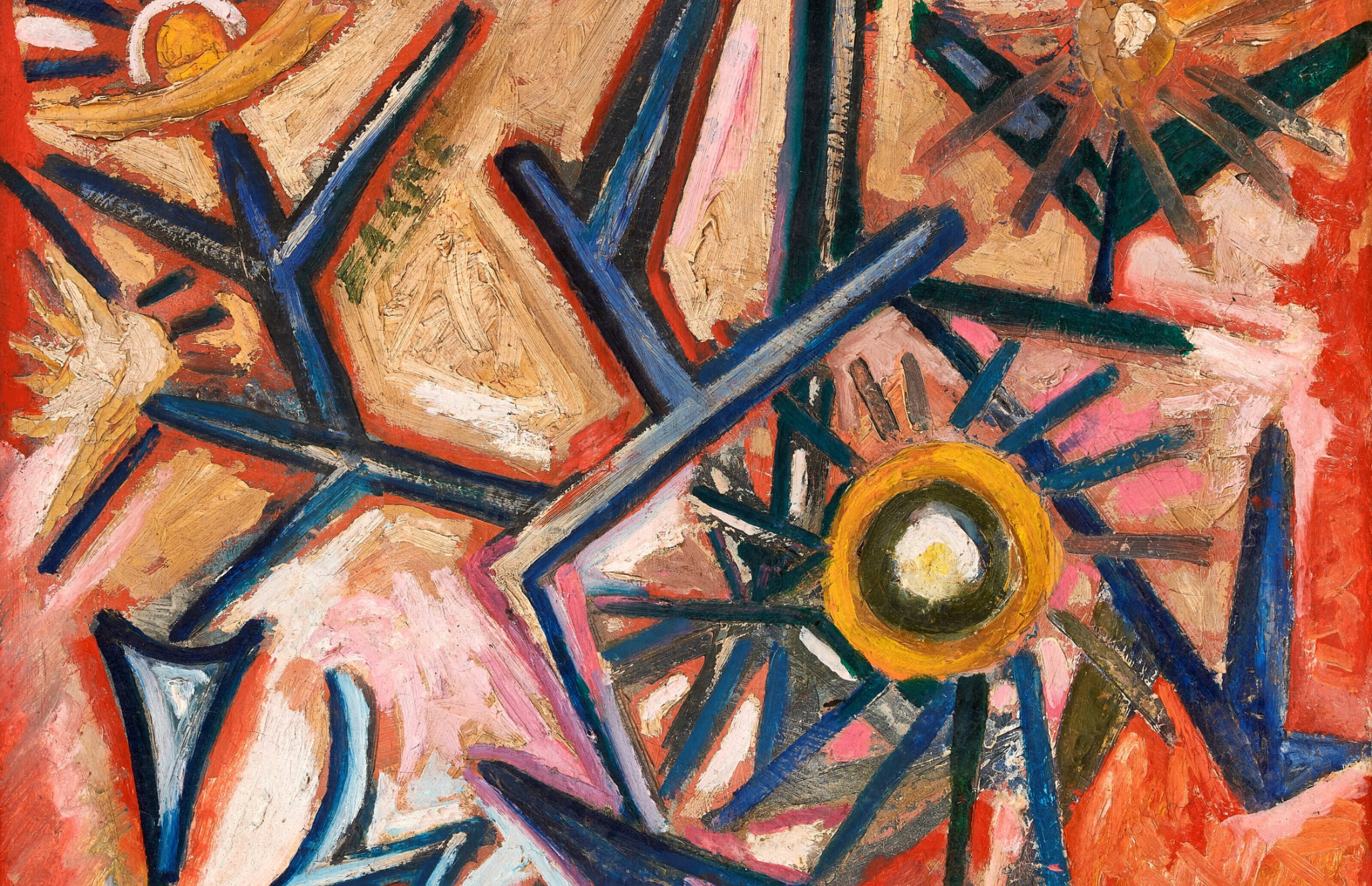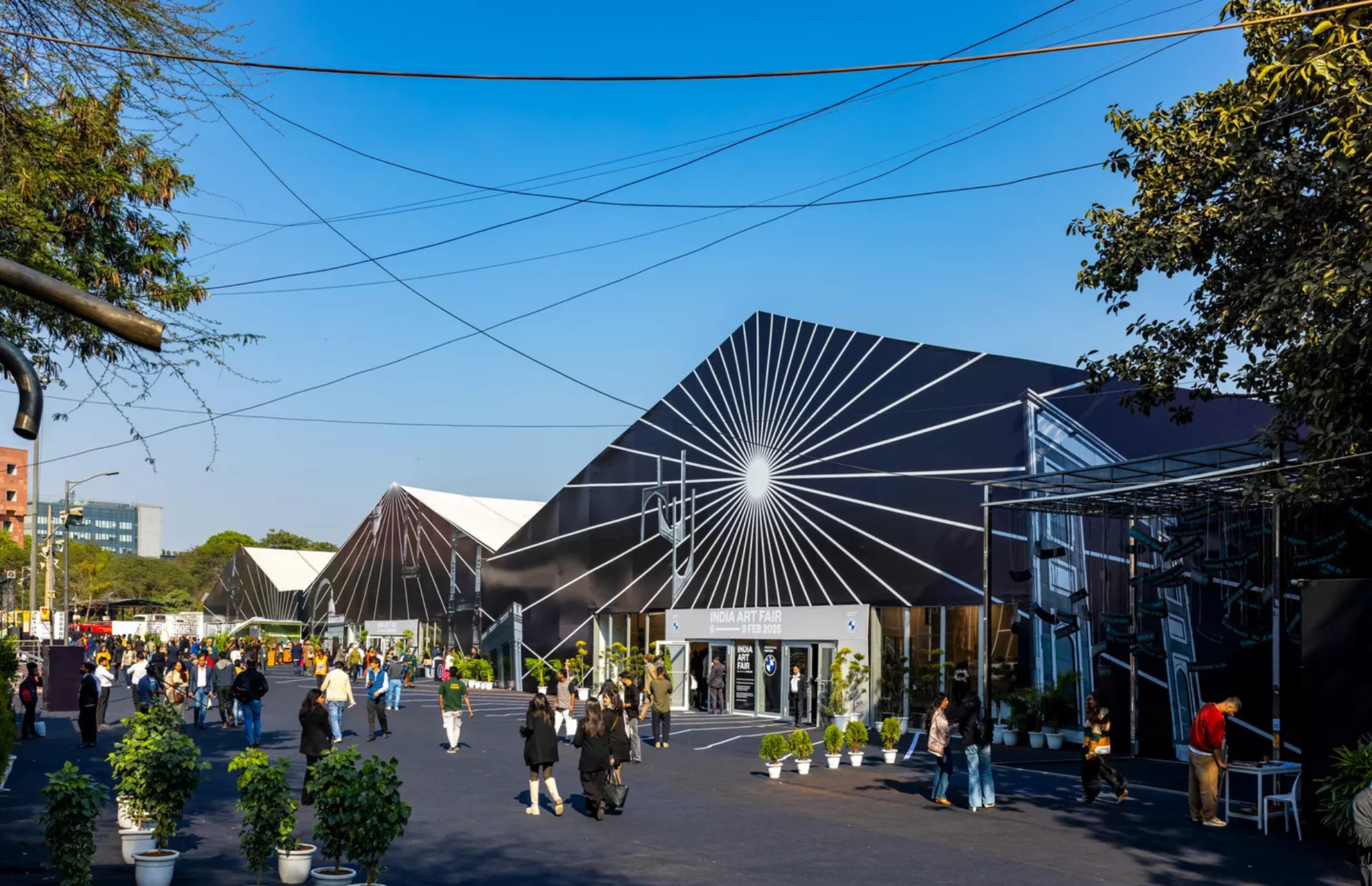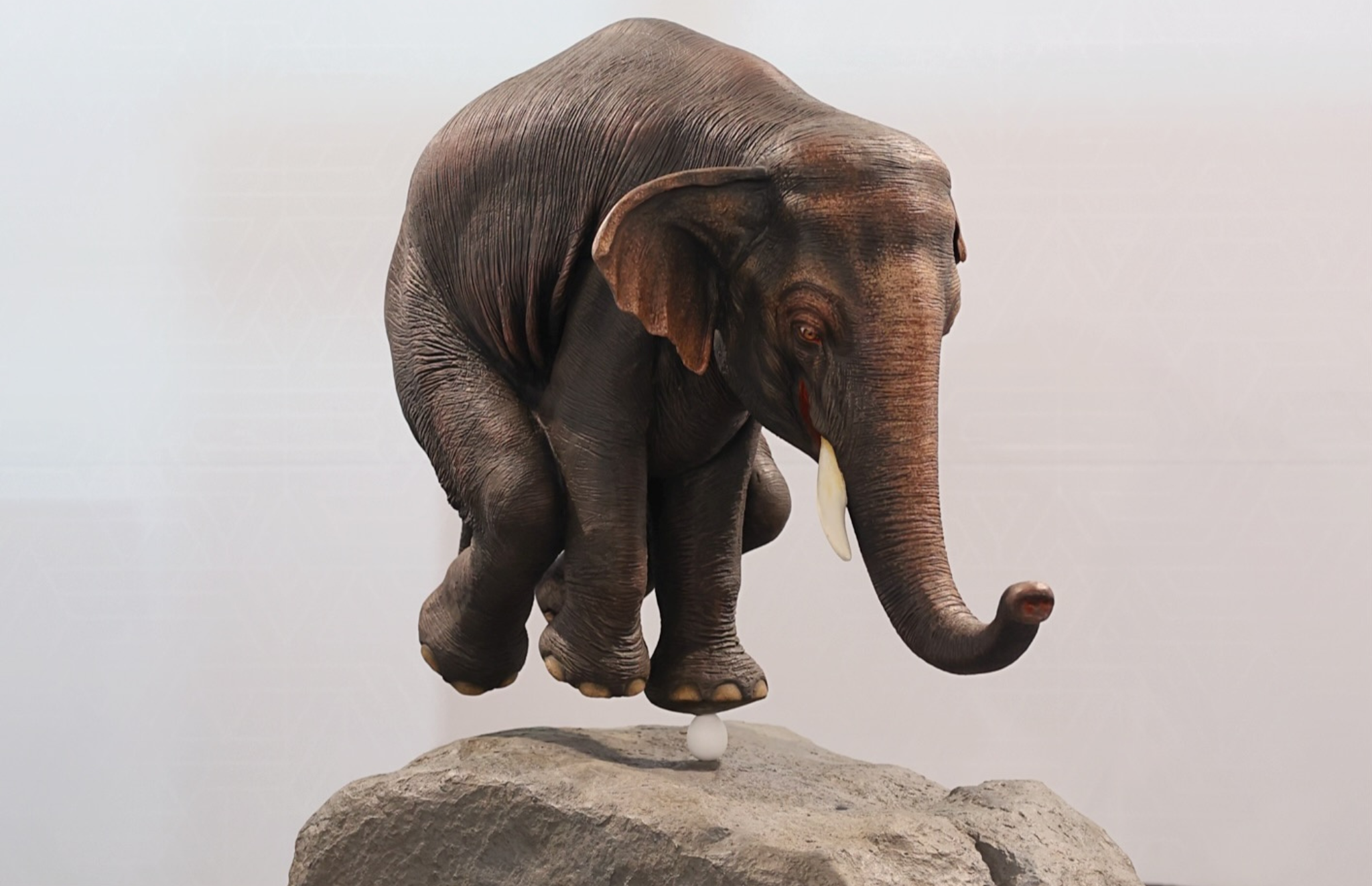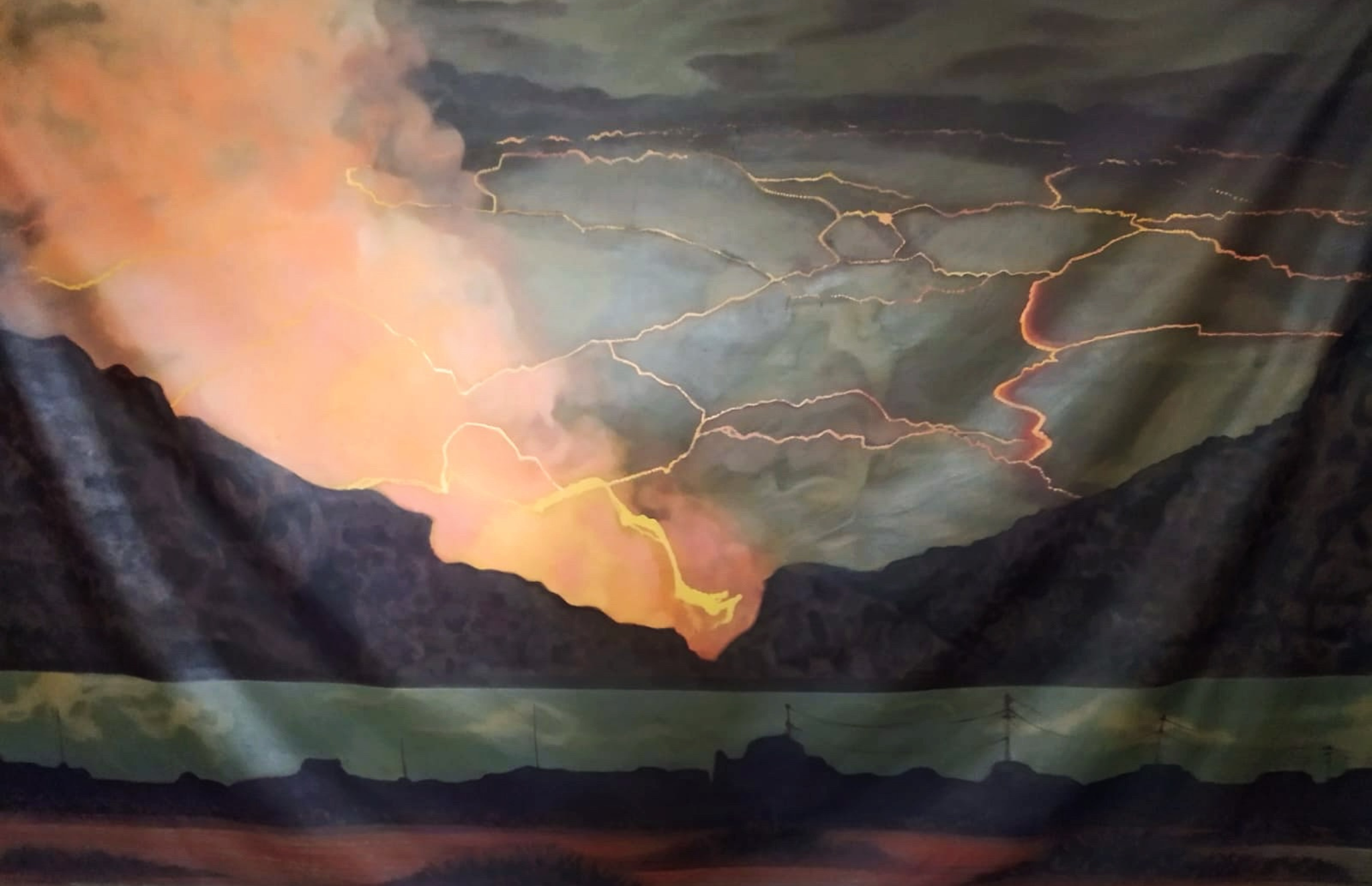PAINTING THE DIFFERENT HUES OF ECO-FEMINISM
Dark Edge of Green, at Emami Art in Kolkata, is a retrospective-scale exhibition of Arunima Choudhury, recognized as one of the most important contemporary artists from Bengal
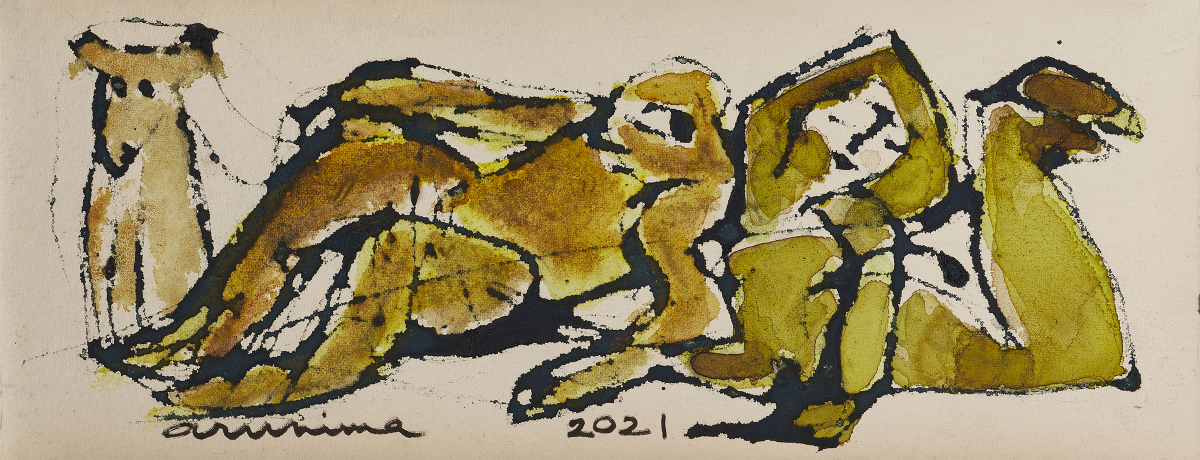
The blue hibiscus in her garden at the beautiful old-world home in Kolkata is the first unique thing that one may notice when one enters Arunima Choudhury’s studio. There is also red hibiscus, a small pond full of yet-to-bloom lotuses, Guppies swimming in its waters and the gorgeous Ixora, a red efflorescence that hangs over the gate. The artist takes us into her studio upstairs and one is overwhelmed by the variety of works that she has stored and stacked up in her intimate working space.
A ceramic head of the iconic Mexican artist Frida Kahlo is one of the first things that one notices, on her shelf and there are others that she tells us about, while cleaning and polishing the works. These sit alongside the large enamel works done on platters that are used for breaking the fast of Ramzan. There are also enamel cups that she stores away in her drawers and then she treats us to a live demonstration of a small painting made from her own hand-ground colours.
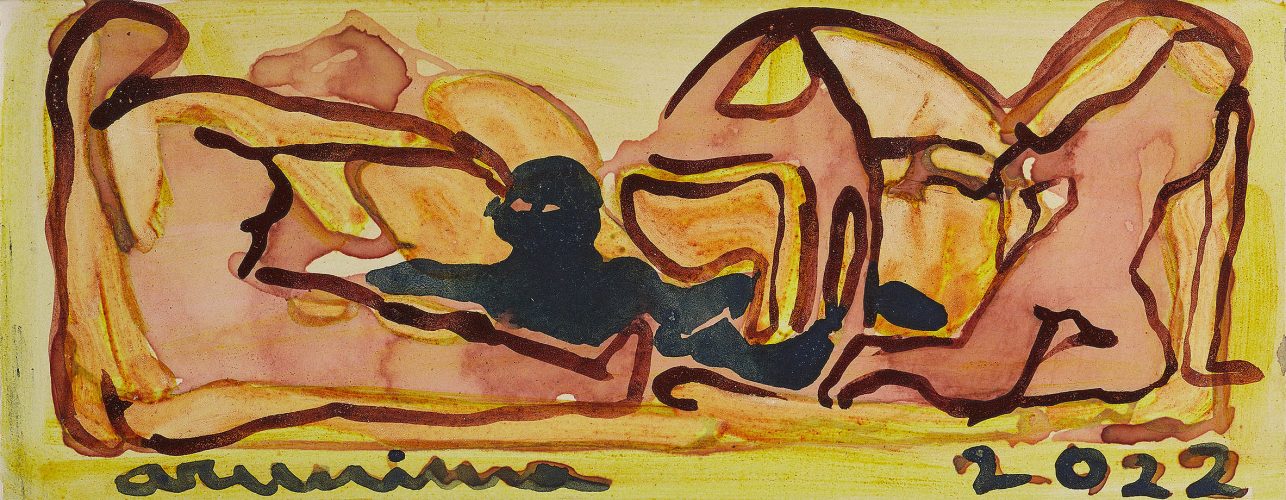
“I love making my own colours and I watch how blue changes to pink and then yellow,” says the artist who mixes various simple things like lime and alum with water and the ground petals of the flowers that she plucks from her garden. She works quickly and quietly as the colours change in manners that are almost magical.
Choudhury was born in 1950 in Siliguri, West Bengal but she moved with her family to Kolkata. She received her diploma in Fine Arts from the Indian College of Arts and Draftsmanship, Kolkata but that was not as easy as it sounds. “My father did not want me to become an artist, he saw it only as a ‘hobby’ and I studied law at first. But then I could not suppress the urge to paint and be an artist anymore and I just followed my heart,” says Choudhury who went on to become an artist.
Choudhury grew under the guidance of renowned painter late Bikash Bhattacharya. But her artistic vision found its true path under the broad aesthetic vision of Rabindranath Tagore. She was attracted to the new ideal of modern Indian art, rooted yet cosmopolitan, and the crucial roles of medium-specific crafts in modern art practices.
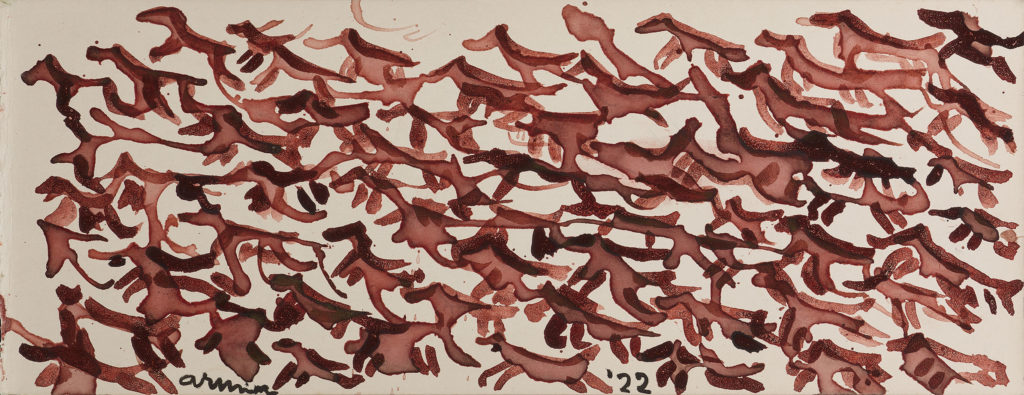
Richa Agarwal, CEO Emami Art in Kolkata who is spearheading the activities says of the exhibition, “It is one of our thought-provoking shows. I have been long fascinated with her works as they are deeply ingrained into the rich vernacular traditions of Bengal and unique in style. This exhibition will be a wonderful opportunity for art lovers in the city to come and visit the series of works,” Agarwal adds.
Speaking of the title and her intention behind the show curator Nancy Adajania says, “The Dark Edge of Green signals a move away from the simplistic reading that Arunima Choudhury’s work is about. Women and nature, are two terms that tend to be seen as uncomplicated synonyms. However, the title refers to the darker forces of the subconscious that have propelled this artist’s vision, freeing it of social and sexual inhibitions. Arunima-di’s eco-poetics could be seen in the Santiniketan lineage of blurring the lines between art and craft, culture and nature. Importantly, though, hers is a gendered ecological critique, both at an artisanal and ethical level. It expresses the deep human entanglement with the natural world,” says Adajania who has curated the exhibition at Emami, where it covers a long arc of her practice spanning three decades between 1995 and 2022.”
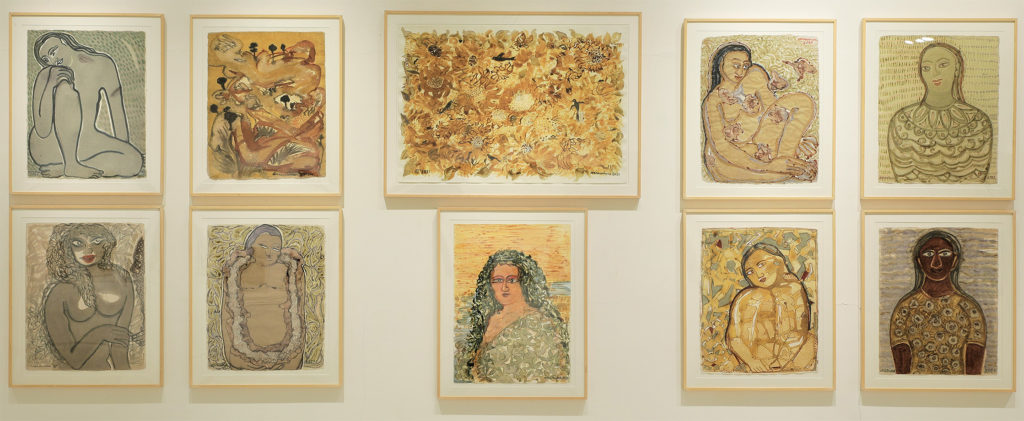
Besides paintings, rendered both in acrylic and vegetable colour, the artist’s most preferred medium, her remarkable but rarely shown fabric, ceramic, and enamel works are also on view at the exhibition. Adajania adds that she has been able to present the works in a complex and unconventional manner because of the intervention of the Kolkata Institute of Art Conservation lab that is part of the Emami Art Gallery that helped her preserve and restore the work. For instance, the fabric works have been presented hanging away from the wall without framing mounted with special archival glue and non-acidic tape.
“Arunima-di’s large vegetable colour works and eco-prints on cotton and rice paper emphasise the significance of interspecies co-existence. One of her eco-prints includes an exchange between the artist and her granddaughter about the ethics of mending and repairing the planet by living in a mindful manner,” says Adajania of a poetic work that uses the quotes of granddaughter and grandmother alongside a large eco-print.
Another important set of works that Adajania refers to in her curator walks is an installation designed by her that involves a handwritten English text written in a handmade paper book, along with a recording in Bengali and a selection of small format framed paintings. “During my research, I came upon the artist’s memoir about her classmate Bina Das, who had tragically died by suicide,” explains Adajania.
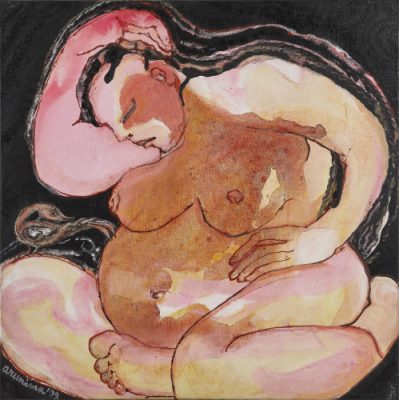
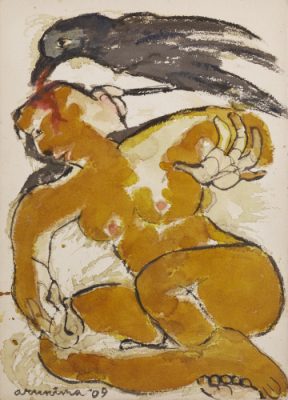
“As a precocious little girl, Arunima-di happened to find herself in the autopsy cell where Bina’s body lay on a cold platform, awaiting dissection. I wanted to find a way to bring this memoir into dialogue with her current works, to share with the viewers the artist’s exploration of sexuality and forbidden desire and her critique of patriarchal violence,” says Adajania who then designed the installation with jagged edges, to house the artist’s memoir and her recent vegetable colour series Beastly Games and Other Love Stories.
“Part woman, part feral, the protagonists of this explosive series cocks-a-snook at patriarchy and its regressive rules. While the memoir is a way of coming to terms with the fear of crossing societal boundaries, the protagonists of ‘Beastly Games’ are full of brio and lila, continuously making and unmaking the self in the act of performance.”
The work is very powerful and it does not illustrate the memoir. Instead, it functions as a testament to Arunima-di’s irrepressible subconscious and her transgressive energy, which re-wilds women, trees and tigers in equal measure.
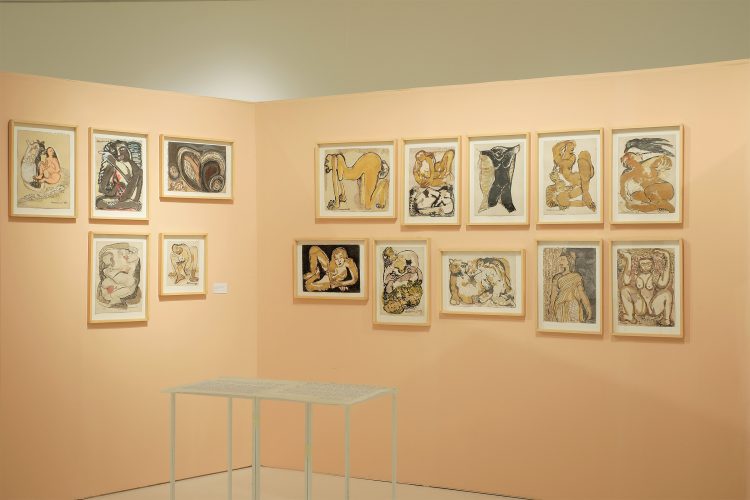
“Arunima-di’s enamel works are at once ominous and tender, archetypal and every day,” says Adajania. “One will encounter delirious blue chasms here, Putana of the poisonous breast, the emaciated Kali with her mind on edge, as well as fevered still life works,” says Adajania. The curator tells us that in her brilliant monochromatic series, Arunima-di choreographs the figures through varying degrees of abstraction, transforming the female body from ‘flesh to smudge’, a residue of history and myth. Arunima-di also plays deftly with scale; her large plates refer to the epic forces of decay and renewal, as well as the cycles of migration and rest. We repeat ‘Charaibeti, Charaibeti’ after her, as we ‘move forward’ with her figures in a journey towards self-realisation.
The exhibition is on till the 20th August 2022 and a show of this nature should be viewed physically rather than online.
Text by Georgian Maddox
Images Courtesy: Emami Art Gallery, Arunima Choudhry
Find more about the Exhibition, Gallery and Artist:

